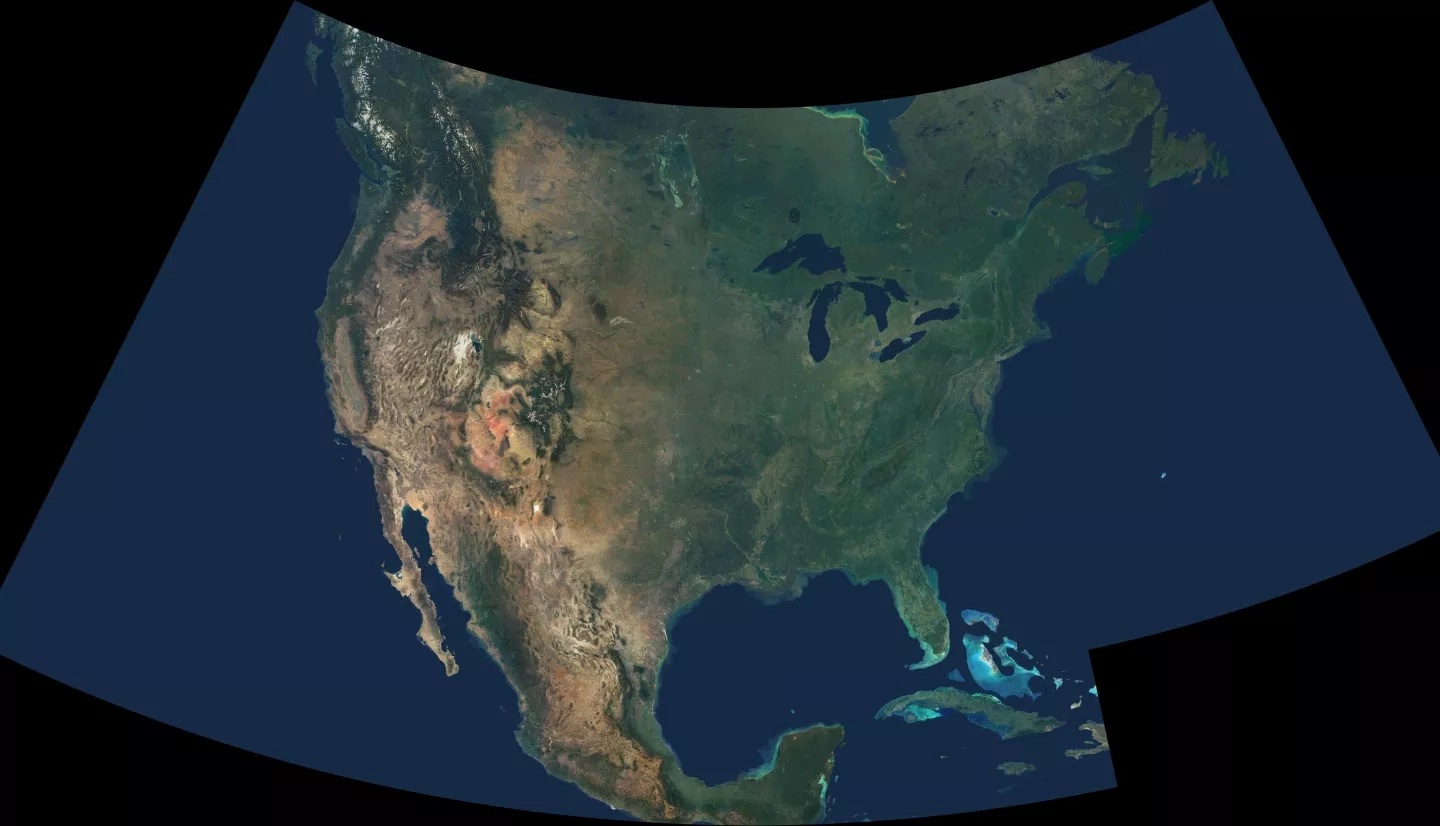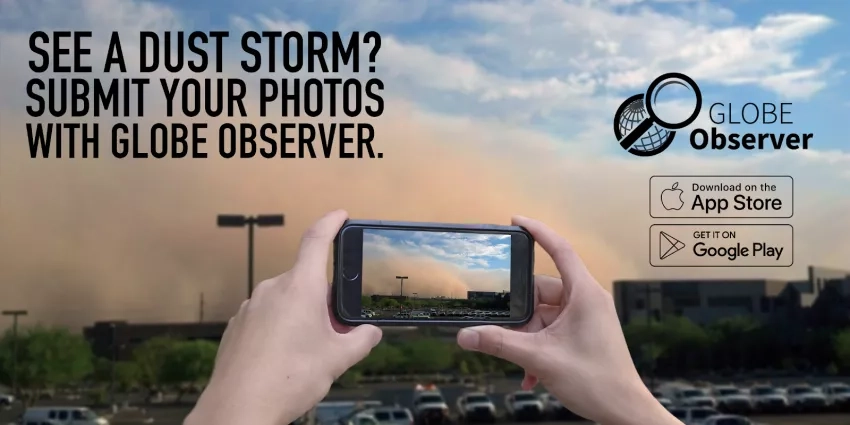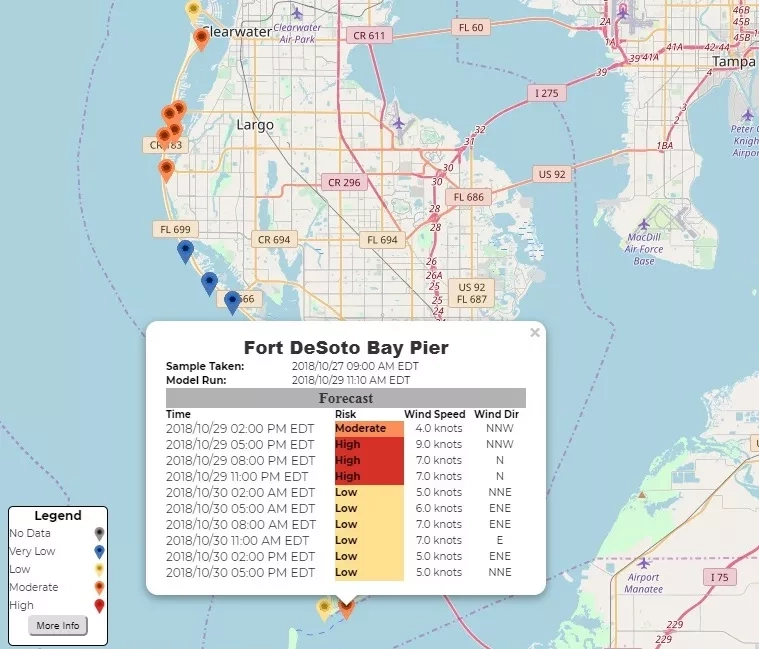Using NASA's unique view from space, the NASA Earth Applied Sciences Program leads the way in the promotion of incorporating Earth-observing data into decision-making related to a variety of health and air quality applications across the U.S. Part of these efforts include the NASA Health and Air Quality Applications program area’s participation in National Public Health Week.
Each April, the American Public Health Association promotes National Public Health Week (NPHW), which aims to identify an appropriate and timely public health topic and highlight ways to improve our nation's health. The NPHW 2020 theme, "NPHW@25: Looking Back, Moving Forward," intends to commemorate the week’s 25th anniversary by reflecting on past achievements and advocating for innovative collaborations and partnerships across public and private sectors to meet established program goals.
Over the past decade, NASA has contributed to advance science by supporting the integration of citizen scientist efforts into real-time environmental research and applications. NASA's citizen science projects strive to advance the understanding of real-world challenges across the globe by fostering collaborations between scientists and community volunteers of all ages.
Scientists, supported by the NASA Health and Air Quality Applications program, have highlighted the valued role of citizen scientists in research applications that advance our understanding of two environmental health risks: dust storms and harmful algal blooms.
Spatial Science and Systems at
George Mason University.
Credits: NASA
Daniel Tong, a research professor at the Center for Spatial Science and Systems at George Mason University, is a dust forecaster who works with the NASA Health and Air Quality Applied Sciences Team (HAQAST). Over the past few decades, dust storms have been reported more frequently across the American Southwest, impacting human health, highway safety, and the economy. These dust storms can lead to highway and airport closures as well as health effects due to poor air quality or spread of the fungal infection Coccidioidomycosis (Valley Fever). As part of Tong's research, he works with the Global Learning and Observations to Benefit the Environment (GLOBE) Program on using remote sensing data to enhance tracking and monitoring of these dust storms. Sponsored by NASA with support from other federal agencies, GLOBE allows the public to conduct real, hands-on science and integrate dust observations into a global data platform.
Using the GLOBE Observer mobile device app, citizen scientists can take photographs and submit these images of dust observations in their geographic area. Scientists then use the submitted ground-based observations to validate the accuracy of their computer models in the prediction of dust storms. These citizen science observations are integrated with collected measurements from ground monitors and aircraft in efforts to verify the accuracy of satellite observations (e.g. from the Moderate Resolution Imaging Spectroradiometer (MODIS) onboard NASA’s Terra and Aqua satellites).
To participate in this activity, please review the step-by-step instructions on how to download the GLOBE Observer mobile device app and submit your images of dust observations on the GLOBE dust storm website. These data will become part of NASA's larger efforts to assist public health agencies in disseminating air quality alerts and help state police departments resolve potential highway accidents.
National Centers for Coastal
Ocean Science. Credits: NOAA
Richard Stumpf, an oceanographer with the National Oceanic and Atmospheric Administration (NOAA), leads efforts to enhance the forecasting of harmful algal blooms (HABs) along the Florida’s Gulf Coast. As a result of the accumulation of the dinoflagellate Karenia brevis, these HABs can produce "red tides" that can cause shellfish poisoning in humans and kill fish and marine mammals. These algal blooms can disperse aerosolized toxins that can trigger eye or throat irritation in even healthy persons and respiratory distress in persons living with respiratory conditions.
While large algal blooms can be observed from diverse data sources – such as remote sensing imagery from satellite data (e.g. from NASA’s Terra and Aqua satellites and the European Space Agency’s Sentinel-3 satellite), ground stations, and airplane flyovers – smaller algal blooms and the impact of dispersed aerosolized toxins can be challenging to localize along long stretches of beach landscapes.
As part of Stumpf's research, he works with various agencies that support the participation of citizen scientists in widespread data collection using the HABscope smartphone app. Volunteers are provided training and equipment to collect short videos of water samples along the beaches. As they upload these images to a central database server, scientists can detect whether these samples have low, medium, or high concentrations of Karenia brevis. Through the integration of these citizen science observations, scientists can validate satellite imagery and disseminate more accurate and timely HABs forecasts to protect the health and well-being of persons visiting or working near beach communities.
To learn more details about National Public Health Week please visit the American Public Health Association's website. To learn about volunteer opportunities working with NASA scientists in citizen science projects, please visit the NASA's Citizen Science program’s website.







